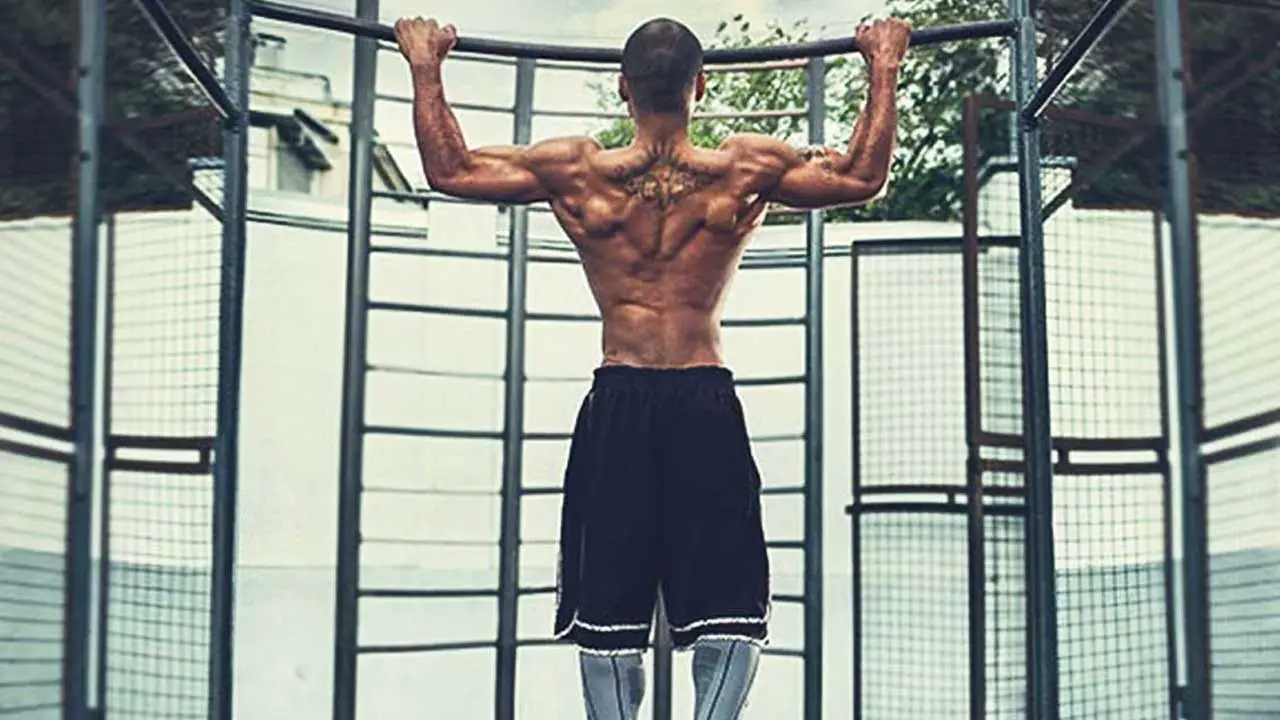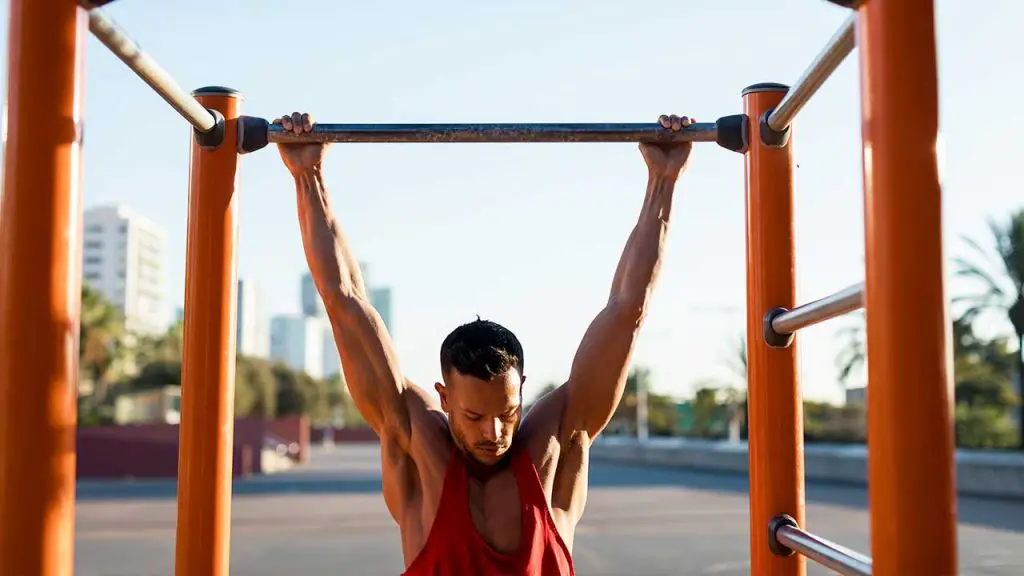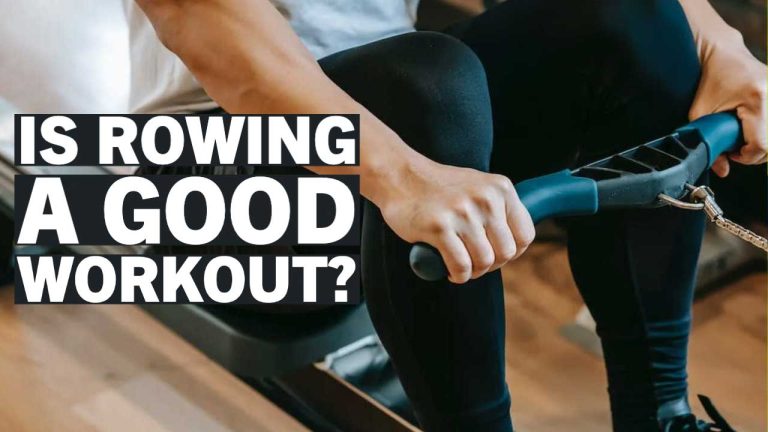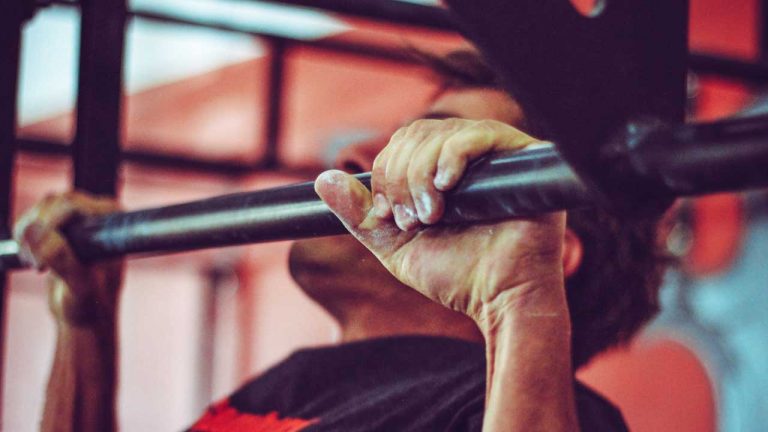Pull-Ups vs. Chin-Ups: Discover the Crucial Differences Between These Exercises

ListedFit is reader-supported. When you buy through links on our site, we may earn a small commission.
Pull-ups and chin-ups are two popular exercises that have been around for decades. Both exercises target the same muscle groups, but there are some key differences between them. Understanding the difference between pull-ups and chin-ups can help you tailor your workouts to achieve your goals more effectively.
Table of Contents
Muscles Targeted
Pull-ups and chin-ups are both fantastic upper-body exercises that target multiple muscle groups, but they do differ slightly in the specific muscles they emphasize. Let’s take a closer look at the primary and secondary muscles targeted in each exercise.
Pull-ups:
In a pull-up, you grip the bar with your palms facing away from you (overhand grip). This grip variation places more emphasis on certain muscles compared to the chin-up.
The primary muscles targeted during pull-ups include:
- Latissimus dorsi (lats) – The largest muscles in your back, responsible for pulling your body upwards.
- Trapezius (traps) – These muscles help stabilize your shoulder blades and assist in upward movement.
- Rhomboids – Located in the upper back, they help with scapular retraction and stability.
- Posterior deltoids – The rear part of your shoulder muscles, which are engaged when pulling your body up.
Secondary muscles involved in pull-ups are the biceps and forearm muscles, but they are not as heavily activated as in chin-ups.
Chin-ups:
In a chin-up, you grip the bar with your palms facing you (underhand grip). This grip variation leads to slightly different muscle activation compared to pull-ups.
The primary muscles targeted during chin-ups include:
- Latissimus dorsi (lats) – Similar to pull-ups, chin-ups also heavily engage the lats.
- Biceps – Chin-ups place a more significant emphasis on the biceps compared to pull-ups due to the underhand grip.
- Lower trapezius – While still engaging the traps, chin-ups tend to focus more on the lower part of the muscle.
- Pectoralis major (chest) – Chin-ups activate the chest muscles to a greater extent than pull-ups, although it’s still a secondary muscle group involved.
Both pull-ups and chin-ups primarily target the latissimus dorsi muscles, but they differ in their secondary muscle activation. Pull-ups place more emphasis on the trapezius, rhomboids, and posterior deltoids, while chin-ups focus more on the biceps, lower trapezius, and pectoralis major.
Depending on your goals, you should incorporate both exercises into your workout routine to maximize the benefits and overall upper-body strength.

The Differences in Grip Explained
One of the main differences between pull-ups and chin-ups is the grip. The grip determines which muscles are targeted during the exercise.
Pull-Up Grip
The pull-up uses an overhand grip, with the palms facing away from the body. This grip targets more of the muscles in the back, including the latissimus dorsi, rhomboids, and trapezius. The wider the grip, the more emphasis is placed on the back muscles.
It is important to note that the pull-up is generally considered to be a more difficult exercise than the chin-up, due to the wider grip and the increased activation of the back muscles.
Chin-Up Grip
The chin-up, on the other hand, uses an underhand grip, with the palms facing toward the body. This grip targets the muscles in the arms, particularly the biceps, as well as the chest and upper back muscles. The closer the grip, the more emphasis is placed on the biceps.
Many people find the chin-up to be an easier exercise than the pull-up, due to the closer grip and the increased activation of the arm muscles.
Overall, both pull-ups and chin-ups are effective exercises for building upper body strength. The choice of which exercise to perform depends on the individual’s fitness goals and personal preferences.
How Many Pull-Ups and Chin-Ups Should I Aim For?
Beginners: If you’re new to pull-ups and chin-ups or just starting out, you might want to start with 1-3 sets of 3-5 repetitions per exercise.
Intermediate: For those with some experience with pull-ups and chin-ups, you should aim for 3-5 sets of 6-10 repetitions per exercise.
Advanced: If you’re more advanced or have a solid foundation of upper body strength, you might aim for 5-10 sets of 10-15 repetitions per exercise. At this level you can also consider doing weighted pull-ups or chin-ups, wide-grip pull-ups, or L-sit chin-ups to increase the challenge and intensity of your workout.
Ensure that you maintain proper technique throughout each rep for every level and allow adequate rest (about 1-3 minutes) between sets.
Remember that these are just general guidelines, and individual goals and abilities will vary. The key is to challenge yourself without pushing too hard or compromising your form.
Consistency and gradual progression are essential for building strength and improving your pull-up and chin-up performance over time.
Difficulty Level
Both pull-ups and chin-ups are challenging exercises that require a lot of upper-body strength. However, some people may find one variation more difficult than the other depending on their individual strength and body composition. This is why it’s important to have some variation in your workouts and consider using both.

Chin-ups are generally considered to be slightly easier than pull-ups because they engage the biceps more, which can help with the pulling motion.
This is because the chin-up grip is more of a supinated grip, which means the palms are facing toward the body. This grip allows the biceps to contribute more to the movement, which can make it easier for some people to perform.
On the other hand, pull-ups require more back and shoulder strength, which can make them more challenging for some people. The grip used in pull-ups is a pronated grip, which means the palms are facing away from the body. This grip places more emphasis on the back muscles, particularly the lats, which can make it more difficult to perform for some individuals.
The difficulty level of these exercises can also vary depending on the specific variation being performed. For example, wide-grip pull-ups may be more challenging than narrow-grip chin-ups due to the increased range of motion and greater emphasis on the back muscles. Additionally, performing these exercises with added weight can also increase the difficulty level.
Variations
Pull Up Variations
Pull-ups are an excellent exercise for building upper body strength, especially in the back, biceps, and shoulders. There are several variations of pull-ups that can be done to add variety to your workout routine and target different muscle groups. Here are a few examples:
- Wide grip pull-ups: This variation involves placing your hands wider than shoulder-width apart on the bar. This targets the lats and upper back muscles.
- Narrow grip pull-ups: This variation involves placing your hands closer together on the bar. This targets the biceps and forearms.
- Commando pull-ups: This variation involves placing one hand in a regular grip and the other in a reverse grip. This targets the biceps and forearms.
- L-sit pull-ups: This variation involves lifting your legs straight out in front of you as you pull up. This targets the abs and hip flexors in addition to the upper body muscles.
Chin Up Variations
Chin-ups are another great exercise for building upper body strength, but they tend to target the biceps and chest muscles more than pull-ups. Here are a few variations of chin-ups that can be done:
- Weighted chin-ups: This variation involves adding weight to your body using a weight belt or vest. This increases the resistance and makes the exercise more challenging.
- Towel chin-ups: This variation involves wrapping a towel around the bar and gripping the ends of the towel instead of the bar. This targets the forearms and grip strength in addition to the upper body muscles.
- Close grip chin-ups: This variation involves placing your hands closer together on the bar. This targets the biceps and chest muscles.
Incorporating different variations of pull-ups and chin-ups into your workout routine can help prevent boredom and target different muscle groups. It is important to use proper form and gradually increase the intensity and resistance over time to avoid injury.
What are the Benefits of Each?
Pull-ups and chin-ups are highly effective upper body exercises that offer numerous benefits.

- Strengthens multiple muscle groups: Both exercises engage various muscle groups, including the latissimus dorsi, biceps, trapezius, rhomboids, and posterior deltoids. This helps build overall upper body strength, stability, and balance.
- Improves grip strength: Performing pull-ups and chin-ups requires strong hand and forearm muscles. Consistently practicing these exercises helps develop and enhance your grip strength, which you’ll notice improves your performance in other exercises and daily tasks.
- Enhances functional fitness: Pull-ups and chin-ups contribute to functional fitness by mimicking real-life movements like climbing or lifting. Improved functional fitness can help make everyday tasks easier and reduce the risk of injury.
- Better muscle definition: As compound exercises, pull-ups and chin-ups help develop and define muscles in your back, arms, and shoulders. Regularly including these exercises in your workout routine can contribute to a more sculpted and toned appearance.
- Better core stability: Both pull-ups and chin-ups engage your core muscles, as they require stabilization to maintain proper form throughout the exercise. A strong core is essential for overall fitness, balance, and posture.
- Versatility and convenience: Pull-ups and chin-ups can be performed using a variety of equipment, such as a pull-up bar, power tower, or even a sturdy tree branch. This makes them convenient whether you’re at the gym, at home, or outdoors.
- Supports athletic performance: The strength, stability, and grip improvements gained from pull-ups and chin-ups can enhance performance in various other sports and athletic activities, such as swimming, climbing, or gymnastics.
Whether you are looking to build strength, increase muscle mass, or improve posture, these exercises can be a valuable addition to any workout program.
Author
Latest entries
 GearJuly 20, 2024Headphones and Earbuds – Tried and Tested!
GearJuly 20, 2024Headphones and Earbuds – Tried and Tested! FitnessAugust 19, 2023Yohimbe vs Yohimbine: A Quick Comparison Guide
FitnessAugust 19, 2023Yohimbe vs Yohimbine: A Quick Comparison Guide AshwagandhaJune 16, 2023Is Ashwagandha Good for Working Out? Key Benefits Explored
AshwagandhaJune 16, 2023Is Ashwagandha Good for Working Out? Key Benefits Explored Sports HeadphonesMay 25, 2023Why Your EarBuds Keep Falling Out – Quick and Easy Solutions
Sports HeadphonesMay 25, 2023Why Your EarBuds Keep Falling Out – Quick and Easy Solutions
Affiliates:
This post may contain affiliate links that at no additional cost to you, the site may earn a small commission. We only recommend products we would use ourselves and all opinions expressed on this site are our own.
General Advice:
The information provided in this article is for general informational purposes only. It is not intended as a substitute for professional advice. Always consult with a qualified healthcare professional before starting any new diet, exercise program, or making changes to your health routine.
Accuracy Advice:
While we strive to provide up-to-date and accurate information, the content in this article may not reflect the most current research or medical guidelines. We encourage readers to do further research and consult with professionals for more personalized advice.
Our Recommendations:
The products and services mentioned in any of our articles are recommended based on our independent research and personal experience. We are not sponsored by any company. We aim to suggest products and services we believe are of high quality and could be beneficial to our readers.






